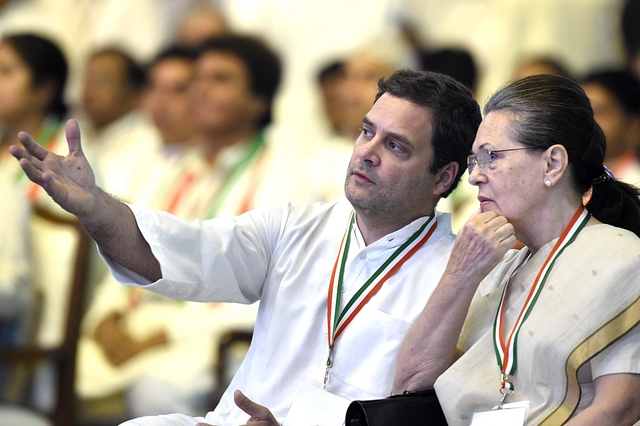
The Real ‘Suit Boot Ki Sarkar’ Party
How Congress got India’s wealth facts wrong, very wrong.
I do not know how many of you have been following the 84th Plenary Session of the All India Congress Committee (AICC). The party may have passed a resolution on agriculture, employment and poverty alleviation at the 84th plenary session of Indian National Congress.
The draft proposal for the same is available at the party website.
There is an English version and there is a Hindi version in this document. Both are in the same document. The English version runs to eight pages. The remaining 11 pages are the Hindi version.
In page six, I found the following quote:
“The wealth of the richest 1 per cent has gone up by 73 per cent while the wealth of the bottom half of the population has grown by just 1 per cent during the Bharatiya Janata Party (BJP) regime.”
Unfortunately, for them, it is verifiable and it is totally wrong, in fact, embarrassing for the Congress party.
For example, the total wealth of the bottom 90 per cent shrunk in India between 2010 and 2014 at a CAGR of 3.75 per cent in USD terms. It has risen at a CAGR of 12.4 per cent between 2014 and 2017.
Yes, rupee crash vs USD played a big part in that contraction between 2010 and 2014. But, that is part of the story of economic mismanagement – double-digit inflation, current account deficit, fiscal deficit and its monetisation, etc.
Funnily and more importantly, the rupee crash against the US dollar in 2013 did not stop the wealth share of the top 1 per cent rising at a compounded annual rate of 5.8 per cent between 2010 and 2014.
So, the differential in the growth rates of the wealth of the top 1 per cent and that of the bottom 90 per cent was 9.5 per cent between 2010 and 2014, in favour of the former!
But, the differential in the growth rates of the wealth of the top 1 per cent and that of the bottom 90 per cent was 4.0 per cent between 2014 and 2017, in favour of the latter!
Between 2014 and 2017, the rupee has remained stable or even slightly strengthened. The story of 2013 may well be repeated this year or next even if not of the same magnitude.
But, the statistics included in that draft proposal is about the actual data of the past and not about the future.
On that basis, it is wrong. Very wrong.
Bottom-line: The share of the top 1 per cent, 5 per cent and 10 per cent in the total wealth in India increased in the United Progressive Alliance II years and they have declined in the National Democratic Alliance years.
Quite the opposite of the message that the Congress party wants to send.
This piece was first published on the writer’s blog, ‘The Gold Standard’, and has been republished here with permission.